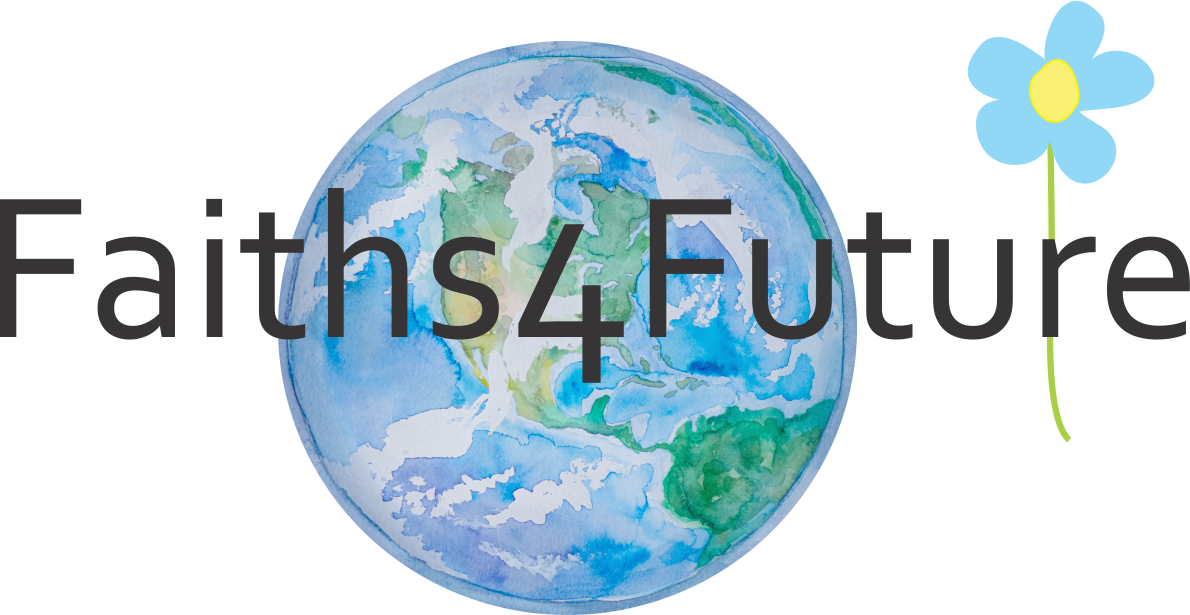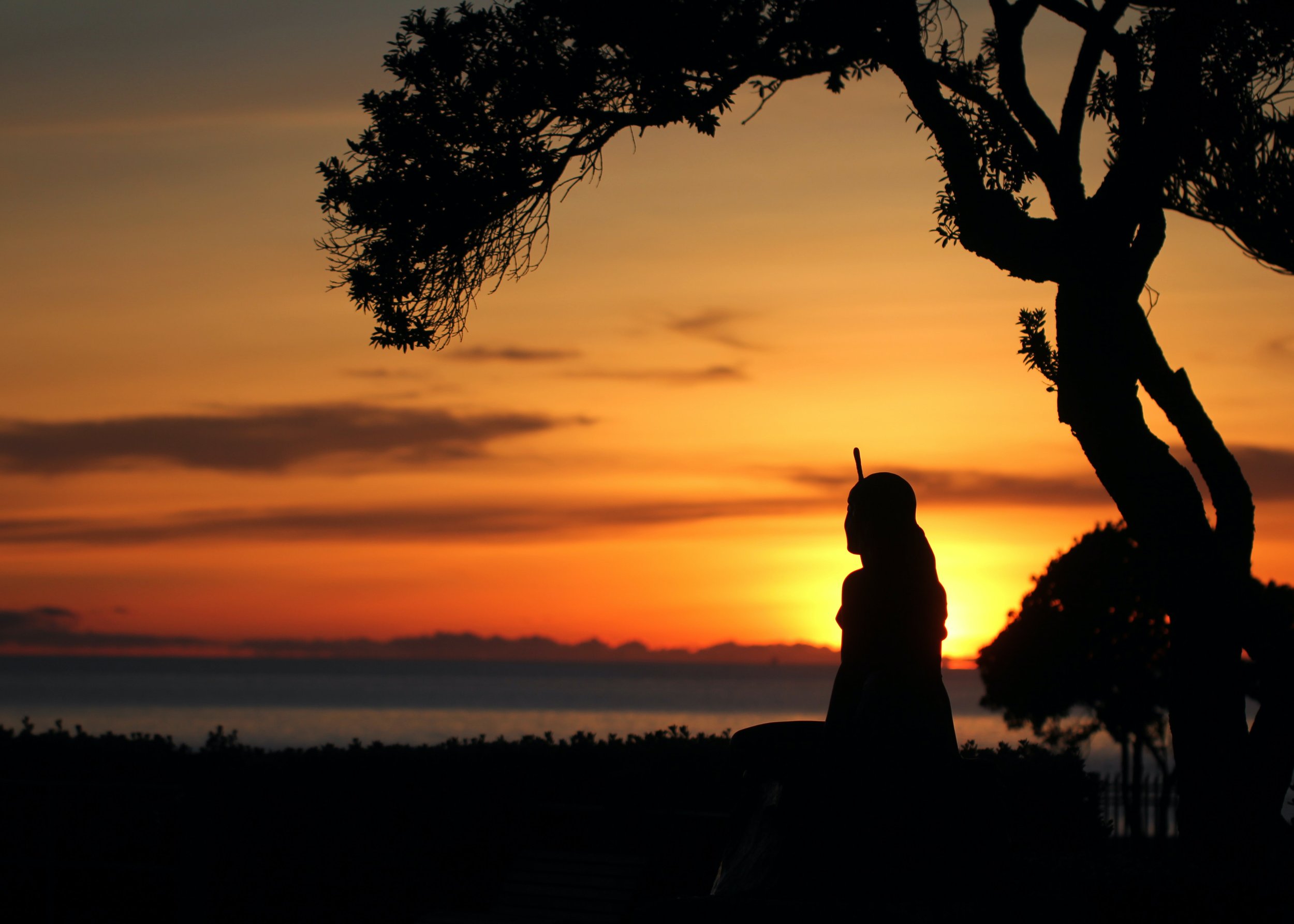Eco-Grief and Acts of Beauty
“We are all wounded when the land that we’re connected to, and that we love deeply, is wounded.”
—Rev. Alison Cornish
Photo by Sandy Millar
On February 1st, conversation at the Climate Cafe Multifaith turned toward acknowledging and expressing the deep pain and sorrow of environmental harm and the climate crisis. To help navigate, Rev. Alison Cornish and Trebbe Johnson led the conversation. They taught us to share our land stories, and offered hands-on practice, helping us better understand how to express our own grief, and also how to express, through stories, prayer and ceremony, the grief that rises within communities.
Rev. Alison Cornish and Trebbe Johnson join the Climate Cafe Multifaith for a conversation of sorrow and radical joy.
Many of us have felt extremely lonely in our grief. Our worship communities rarely take on the subject of environmental degradation, climate crisis, and land destruction. Prayer following a disaster is more common. But when the wounding comes at the hands of industry, or in the name of ‘development,’ that destruction is rarely spoken of in church. Yet the grief is real all the same, be it from a tornado, or a forest bulldozed for a mall and warehouses, or a river filled with coal ash, or a dying coral reef.
In talking about eco-grief, one hope was that we as faith leaders could find a way to be better prepared to meet this deep and painful sorrow. Rituals of western Christian churches are ill prepared for this. Baptism, communion, and the words read over the dying make no mention of what to do when we must use bottled water to baptize because the tap water isn’t safe. Or when a life wasn’t lost to cancer or age, but to climate change: crop loss, heat wave, or flood.
The abundant life we speak of in the Holy Books somehow got separated—dare we say extracted from—God’s vibrant earth along with the iron ore, ‘forestry products,’ and fracked gas.
“How do we find and make beauty even when it seems on the surface that there’s nothing there and it’s just a waste?”
—Trebbe Johnson
Photo by Jeremy Bezanger
This is the intersection where the work of Rev. Alison Cornish and Trebbe Johnson becomes so important. Rev. Alison Cornish was inspired to deepen her faith and training by engaging environmental grief partly because of the love and loss she had experienced in her own life. At the Climate Cafe she spoke of her love for the Osage orange trees she knew as a child—trees that were bulldozed to build a mall. Then, in the aftermath of super-storm Sandy, she responded by working to develop rituals and prayers in interfaith contexts, and within her own ministry.
Today, she is working in eco-ministry, currently connected with the BTS Center in Maine. Eco-grief work can and must be done in congregational communities to acknowledge environmental harm and the loss we experience around that harm. Rev. Cornish explains that her work is about “pulling that community together, the community of lay leaders, of clergy, of people with and without faith affiliations who are looking for a hearth to lay down their burdens of grief.”
“Our spiritual practice and spiritual practices ground us. They keep us honest, they keep us engaged, they keep us open, and the more of us that make a commitment to that kind of spiritual practice, that to me is where the transformation happens.”
—Rev. Alison Cornish
Photo by Dahiana Waszaj
Laying down grief does not mean to process it and discard it, like it was some type of industrial project. It means instead that a weight on the heart is lifted—and hope emerges—when you don’t have to hold that sorrow alone. Explains Rev. Cornish, when “we look at each other's eyes, we recognize how much we share, how much we need each other, how much we are interconnected with one another. And it's from that love, from that connection, from that beauty, that we can move forward and do something different.”
This sharing can be powerful when people share their experiences alongside the stories of their faith traditions. Rev. Cornish shared that on a year when Earth Day was the same day as Good Friday, the congregational rituals that year drew together the crucifixion and creation with an acknowledgement of environmental harm, as well as a celebration of restoration in “a joyous Easter Morning service.”
Again, one of the challenges with working within western church traditions is that, although the Hebrew Bible and Christian New Testament speak to the power of land and the human place in the landscape, the ‘land’ and ‘earth’ part of those stories are not prioritized in word or at the table. This means that spiritual practices centering the desert of Abraham, the green herbs of Passover, the fresh, rolling rivers of revelation, are peripheral to our faith lives. Perhaps this is part of how we got here, and to remedy the destruction we have caused, robust rituals such as exist in many Indigenous communities need to be re-membered and redeveloped.
We even need new words. Rev. Cornish shared the word ‘solastalgia.’ Solastalgia is a word coined by Glenn Albrecht meaning ‘The Distress Caused by Environmental Change.’ This definition attempts a dispassionate scientific description. But in fact, the ‘environmental change’ Albrecht refers to is the devastating destruction caused by “persistent drought'“ and “long term, open-cut coal mining.”
In the clip below, Rev. Cornish speaks to the concept of ‘solastalgia’ drawing it into a spiritual context. In the clip, she speaks of acknowledging pain through relationship and spiritual practice, naming the loss and grief, but also holding on with persistent love to the underlying and God-given beauty of a place, even when it has been harmed.
Trebbe Johnson’s work also arose out of a response to the sorrow she experienced seeing destruction of land. She, like Rev. Cornish, studied with ecopsychologist Joanna Macy, and developed a deep conversation within herself about sorrow and beauty. That conversation rose up into a book, Radical Joy for Hard Times: Finding Meaning and Making Beauty in Earth's Broken Places and an organization, RadicalJoy.org, with a call to restoring relationship with harmed places through acts of radical joy and gifts of beauty.
Johnson recognizes, too, that while mourning a forest fire or coal mine is bad enough, what we are dealing with now in the climate crisis is far more challenging. Says Johnson, “with an issue like climate change where things are going to keep happening, it's not like a tornado or a hurricane. In a wildfire you might lose everything, but then you start thinking about how to rebuild, or ‘how do I heal?’” With climate change, however, the challenge is greater as it “is this ongoing thing.”
To help people find ritual and ceremony together she developed two things. One is the five step spiritual/prayerful practice of Radical Joy. The second is the gift of the Global Earth Exchange. Basically, the Global Earth Exchange is an occasion—June 25th this year—to practice the five steps that culminate in joy and reconnection to the places we’ve loved and now mourn. She is quick to mention that you don’t have to wait for the calendar in June, and that anyone can go to a wounded place and practice Radical Joy every day by simply making “a gift of beauty for a place.” But the occasion has offered a day of opportunity for people from the Arctic to South Africa to engage the five step practice and share their stories.
“You don't need to be a professional, you don't need incense or ribbons or sage, you don't need anything. Everything that you need to make this gift of beauty is already there.”
—Trebbe Johnson
Photo by ETA+
The practice of going to a damaged place might seem strange to people at first, but Johnson encourages people to do it anyway. She narrated a story that typifies what she hears from people after they grudgingly agree to participate, then experience the transformation of heart that comes from having actually done something. “My friend had this crazy idea. We were going to go and stand outside the gates of a superfund site. I thought that sounded really stupid, but I love my friend so I went and then I end up falling in love with the place.”
RadJoy practice has five suggested steps. It all starts with her encouragement to “go to a wounded place.” Get together in that place with friends or companions and “share your stories,” because “that part of the practice kind of makes the place come alive again.” As the stories are shared, the place itself begins to emerge in a more vital way, “and you realize you're still connected.” Johnson then recommends some alone time in the space, for reflection and experience. Following that, folks return together again. The most important part is the act of beauty. Having been present to a place and shared stories, Johnson says it is powerful to offer a gift that acknowledges beauty, offers consolation, or demonstrates gratitude.
One thing to remember is that the ceremony does not need to conform to some standard. She notes that folks who were not taught rituals for the wellbeing and love of the land may wonder how to do it. Try to avoid imitating the ceremonies of other people and cultures. Instead, feel empowered to create ceremony in the moment and in the place where you are from within yourself, or in your group. All of us once had ancestors who were connected to land and ceremony. It is within us all.
In the short clip above, Trebbe Johnson speaks to the importance of creating acts of beauty in wounded places. Grief isn’t a competition, it is something we all feel. Each of us can take part in, and experience, our grief and transformation of that grief through relationship.
Based in New England, Rev. Alison Cornish is a Unitarian Universalist community minister who has centered her work in drawing ecological practice together with interfaith traditions. Like many, she felt called to deepen her own theological study from encountering ecological crisis; it was Superstorm Sandy that led Rev. Cornish to focus an ecological focus on earth, grief, hope, and climate change.
Trebbe Johnson is the author of Radical Joy for Hard Times: Finding Meaning and Making Beauty in Earth's Broken Places, and three other books, as well as many articles and essays that explore the human bond with nature. She is also the founder and director of the global community Radical Joy for Hard Times, devoted to finding and making beauty in wounded places. Trebbe speaks four languages; has camped alone in the Arctic wilderness; studied classical Indian dance; and worked as a model, a street sweeper in an English village, and an award-winning multimedia producer. She has led contemplative journeys in a clear-cut forest, Ground Zero in New York, the Sahara Desert, and other places. She lives in Ithaca, New York.
Rev. Richenda Fairhurst is here for the friendship and conversations about climate, community, and connection. She organizes the Climate Cafe Multifaith as a co-leader of Faiths4Future. Find her in real life in Southern Oregon, working as Steward of Climate with the nonprofit Circle Faith Future.






